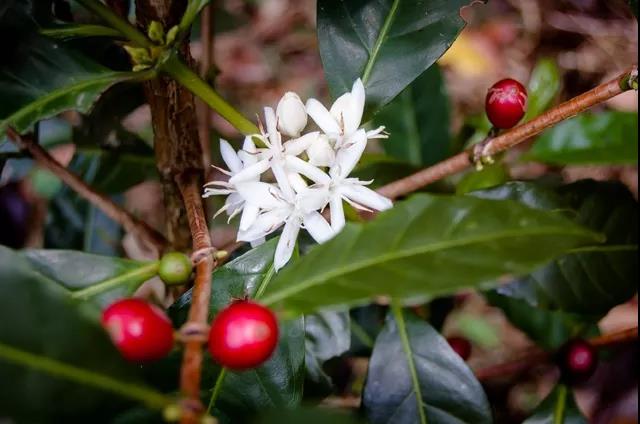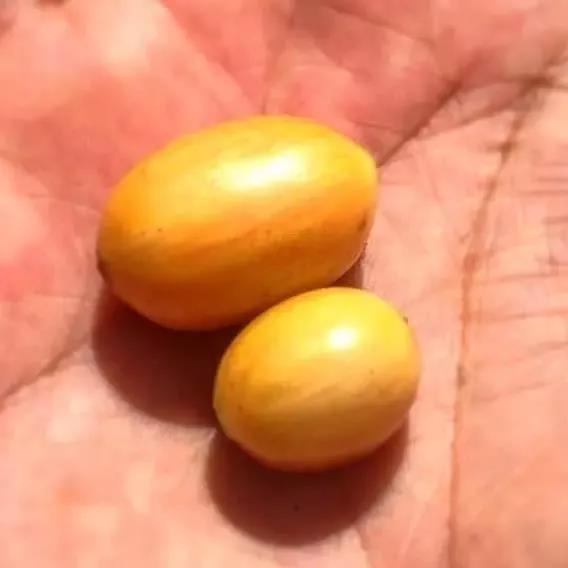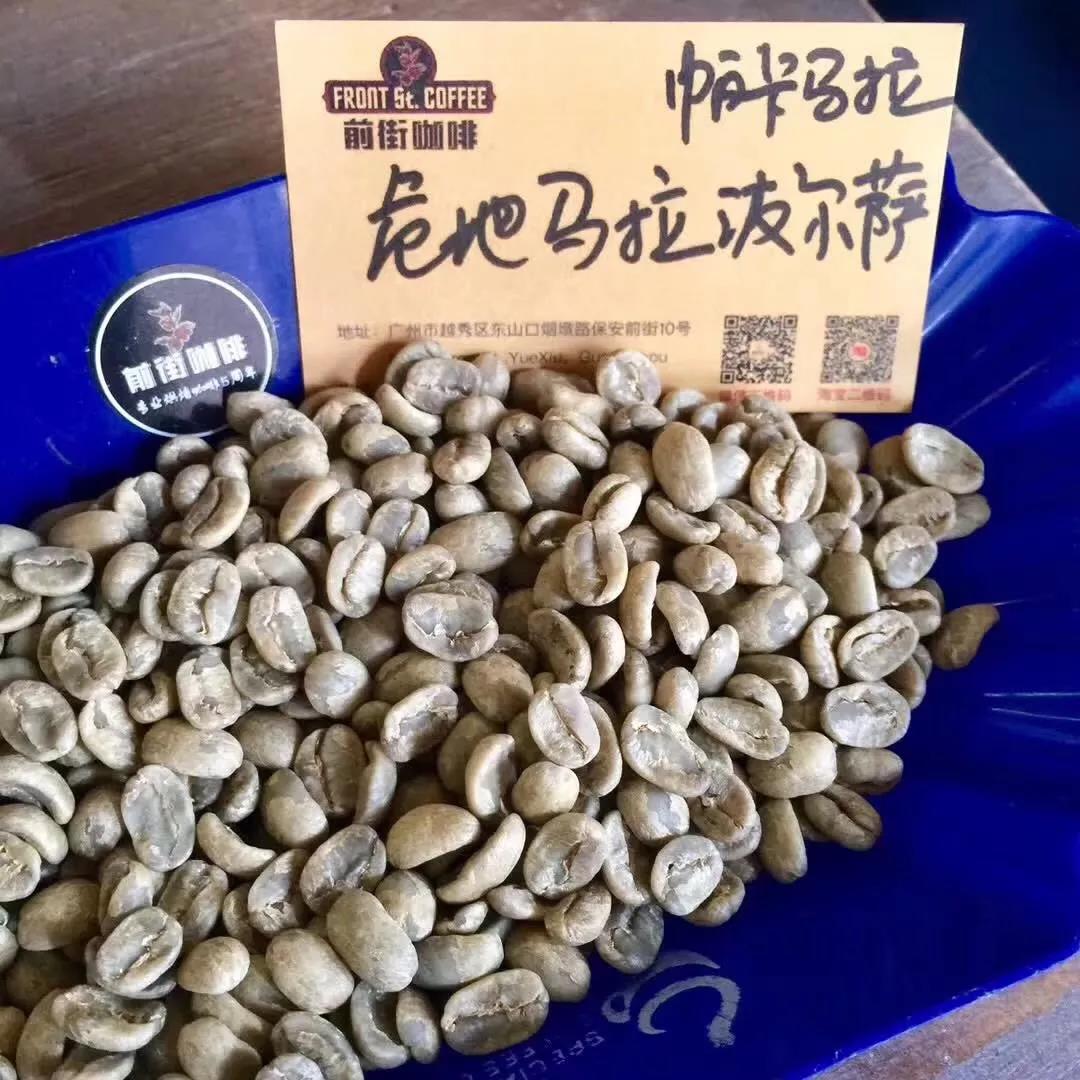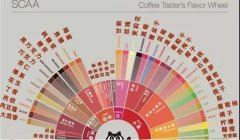Will there be any difference in flavor when the same coffee variety is grown in different regions? Local style versus coffee
I believe that many enthusiasts will encounter such a situation. I buy a bag of beans with citrus and peach flavor, but I can't taste them, so I suspect it's the beans, the cooking, or the senses.
The flavor of coffee bothers many students. How can I not drink so many flavors on the flavor table? ~ after all, not everyone has professional feelings, or I drink not peach flavor, but plum flavor. The reason for this difference is the different regions of cultural life and diet, different descriptions of the same cup of coffee, so coffee taste, the most important thing is communication. Tell me how you feel about this bean, different culture, different experience, different description must be different, but this kind of communication can bring a lot of fun, right?
The aroma of coffee is felt by our sense of smell, and the aroma is definitely thousands of times more complex than the taste. Usually we say that coffee has the taste of apple is actually felt by the nose. There are many descriptions of fruits in the flavor wheel: strawberry, blueberry, raspberry, jasmine, grapefruit, lime, cherry, grape, peach, black tea.
We can smell a smell, taste a taste, but maybe we can't describe it very accurately. The flavor wheel can classify all the taste systems perceived by human beings, corresponding to the smell system is the smell wheel, with the practice of the two, we can clearly sense the slightest difference among all the odors.
When it comes to aroma and taste, this can be said to be the most similar place between coffee and wine. Like wine, coffee has a unique aroma due to the influence of different soils and roasting processes. When it comes to the roasting process, the quality of coffee is equivalent to that of wine brewed in the cellar, and the roasting temperature will affect the quality of the coffee, just as the cellar will affect the final taste of the wine. Coffee tasting is the same as tasting red wine, distinguishing between local customs and varieties, and coffee bean varieties show different flavors in different countries and regions.
Take species as an example, there are many kinds of coffee in every corner of the world. Coffee beans grown in different soils have different aroma and taste. Like grapes, different soil is suitable for different coffee trees, and elements such as soil, sunlight and other climate can affect the aroma, taste and quality of coffee.

Before the entrance, use your nose to appreciate the aroma of the coffee. Here you can not hesitate to borrow wine tasting words, first smell your coffee to see if it has aroma, such as flower, fruit or wine, whether there is abnormal rotten soil, mildew, volatile sour or spicy taste, these are the taste produced by poor quality or improper preservation of coffee beans. If it is a healthy coffee, then in the aroma can give you a lot of enjoyment. You can not hesitate to use the wine tasting system to evaluate a coffee, looking for fruity, floral, botanical, roasted and spicy aromas. As the heat of coffee helps spread the aroma, you can easily capture the rich and complex aroma of coffee.
This paper briefly introduces several common coffee varieties, which have some flavor characteristics in different regions and can also be used as a reference for the description of flavor terms:
Rose summer variety (Geisha)
Panama (Geisha): strawberry (strawberry), jasmine (jasmine floral), mint (bergamot), caramel (caramelly), chocolate (chocolate), grapefruit (grapefruity), plum (plum), citrus (citrus-orange)
Costa Rica (Geisha): sweet (sweet floral), jasmine (jasmine), citrus (citrus-orange), caramel (caramelly), chocolate (chocolate)
Colombia (Geisha): pomegranate (grave), vanilla (vanilla), chocolate (chocolate), caramel (caramelly), citrus (citrus)
Geisha: lime (lime juice), vanilla (vanilla), jasmine (jasmine floral), sweet grapefruit (sweet grapefruit), rose tea (tea-rose), strawberry (pine-strawberry)

Iron pickup (Typica)
Peru (Typica): nutty (nutty), milk chocolate (milky chocolate), herbs (herbal-floral), pears (pear-fruit), vanilla (vanila), caramel (caramel), apples (apple-like), honey (honey-like), peach tea (peach tea), ripe oranges (ripe orange), jasmine (jasmine hints)
Typica: almond peel (almond skins), silky taste (silky mouthfeel), brilliance (brightness), red malic acid (red apple acidity), roasted peanuts (roasted peanut), hazelnut (hazelnut), orange peel (orange peel), melon (melon), sweet grape juice (sweet spice grape juice)
Typica: Apple (apple), cocoa powder (cocoa powder), caramel (caramel), BlackBerry (black berry), orange white hair (orange pekoe tea), honey (honey)
Mexico (Typica): floral (floral), hazelnut (hazelnut), mango sweet (mango sweetness), peach and apricot (peach-apricot), vanilla (vanila), unripe apple (malic)
Panama (Typica): chocolate (chocolate), apple (apple), peach (peach), plum (plum), floral (floral), caramel malt (caramel-malt), lemon (lemon), buttery taste (buttery mouthfeel)
Costa Rica (Typica): soft chocolate (soft chocolate), honey (honey-candy), apple (apple), weak citrus acid (less citrus acidity), white grape (white grape), orange (tangerine), apple juice (apple juice), nectar (floral honey), hibiscus flower (hibiscus floral)

Bourbon (Bourbon)
Brazil (Bourbon): cocoa powder (cocoa powder), orange (orange), vanilla (vanila), almonds (almond), chocolate (chocolate), caramel (caramelly), yellow sugar (brown-sugar), dried mango (dry mango), peach (peach)
Nicaragua (Bourbon): milk chocolate (milky chocolate), maple syrup (maple syrup), walnut (walnut), peach-apricot aroma (peach-apricot), almond (almond), honey (honey), malt (malty)
Panama (Bourbon): floral (floral), cherry fruits (cherry-fruited), vanilla (vanilla), malt (malty), caramel (caramelly), chocolate (chocolate)
Tanzania (Bourbon): caramel (caramelly), sweet fruit (very sweet fruit), brown sugar (brown sugar), vanilla (vanilla), chocolate (chocolate)
Bourbon: caramel (caramelly), toast (toasted bread), chocolate powder (chocolate powder), apple (apple), plum (plum)
Costa Rica (Bourbon): sugar (sugar sweetness), roasted almonds (roasted almond), hazelnut (hazelnut), peanut (peanut), BlackBerry (black berry), cinnamon (cinnamon), malt (malt), sweet tobacco (sweet tobacco flavor)

Marago Gippe (Maragogype)
Nicaragua (Maragogype): lemon (lemon), cinnamon (cinnamon), cola (cola), floral (floral), citrus (citrus), melon (melon)
Maragogype: strawberries (strawberry), toast (toasted bread), vanilla (vanilla), raisins (raisin), flowers (floral), plums (plum), hibiscus flowers (hibiscus)

Kent (Kent)
India Malabar (Kent): spicy aroma (pungent spicy), tobacco (pipe tabacco), caramel (caramelly)
Pacas (Pacas)
El Salvador (Pacas): sweet peach (sweet peach), vanilla (vanilla), flower (floral), jasmine (jasmine floral), caramel (caramelly), orange (orange), lemon (lemon), melon (melon)
Honduras (Pacas): bergamot (bergamot), Chinese fir (cedar), honey (honey), peach (peach), lemon (lemon), grape (grape), watermelon (watermelon), apple (apple), dried grape (raisin)
Pacamara (Pacamara)
Pacamara: caramel (caramelly), honey (honey), vanilla (vanilla), flower (floral), peach (peach), hazelnut (hazelnut), jasmine (jasmine)
Nicaragua (Pacamara): chocolate (chocolate), caramel (caramelly), orange (orange), maple syrup (maple syrup), honey (honey), raspberry (raspberry), cinnamon (cinnamon), apricot (apricot)
El Salvador (Pacamara): oranges (orange), vanilla (vanilla), lemons (lemon), chocolate (chocolate), apricots (apricot), lemonade (lemonade), limes (lime), flowers (floral)

SL28
Kenya (SL28): malt (malty), caramel (caramelly), almond (almond), flower (floral), vanilla (vanilla), citrus (citrus), apple (apple), peach (peach)
SL34
Kenya (SL34): caramel (caramelly), butterscotch sugar (butter scotch candy), orange (orange), grape (grape), plum (plum)

Catuai (Catuai)
Panama (Catuai): Apple (apple), peach (peach), chocolate (chocolate), apricot (apricot), mango (mango), almond (almond)
Catuai: chocolate (chocolate), cinnamon (cinnamon), plum (plum), honey (honey), lemon (lemon), apple (apple), grape (grape)
Brazil (Catuai): flower (floral), watermelon (watermelon), peach (peach), grapefruit (grapefruity)
Costa Rica (Catuai): pear (pear), floral scent (floral), mango (mango), caramel (caramelly), lemon grass (lemon grass), chocolate (chocolate), Chinese fir (cedar)

Mundo Novo
Brazil (Mundo Novo): nuts (nutty), malt (malty), chocolate (chocolate), banana peel (banana skin), sweet tobacco (sweet tobacco), orange / orange (tangerine/orange)

In fact, as long as we drink more different varieties of coffee, learn more about coffee knowledge, and then practice and communicate repeatedly, it will be easy to drink one or two flavors!
Important Notice :
前街咖啡 FrontStreet Coffee has moved to new addredd:
FrontStreet Coffee Address: 315,Donghua East Road,GuangZhou
Tel:020 38364473
- Prev

There are so many aromas of coffee, how to tell the fragrance of flowers in coffee?
Coffee drinkers must know that most boutique coffee aromas contain floral aromas. But the aroma of coffee is so complex, and there are so many flowers, how do you tell whether a coffee has a floral fragrance and what kind of fragrance it belongs to? So it is necessary to share with you here, the following is the knowledge that the editor has learned from the exchange with coffee teachers who have been in practice for many years.
- Next

How to tell the taste of lemon, grapefruit and honey in coffee? How to identify the flavor of coffee?
When we taste coffee, it is easy to confuse the concepts of taste, flavor and aroma. In fact, the words "taste", "taste" and "aroma" cannot be accurately interchangeable, but it is easy to tell the difference between them. To put it simply: Taste represents the sensation of the whole mouth (including the tongue). Aroma is produced in the nasal cavity by the sense of smell.
Related
- How did the Salvadoran coffee industry develop in Central America?
- What exactly does the golden cup extraction of coffee mean?
- The Origin of Coffee flower
- [2023 Starbucks World Earth Day] there are more meaningful things besides free Starbucks coffee!
- What kind of coffee is there in Spain? 9 Flavors of Spanish Coffee
- Aromatic African coffee| Kenya's coffee culture and historical production area
- Liberica Coffee Bean knowledge: the characteristics of Liberian Coffee beans of the three original species of Coffee beans
- The origin and formula of Spanish latte introduces the taste characteristics of Bombon coffee in Valencia, Spain.
- How to adjust the solution of over-extracted coffee
- What is the tasting period of coffee beans? What is the period of coffee and beans? How should coffee wake up and raise beans?

